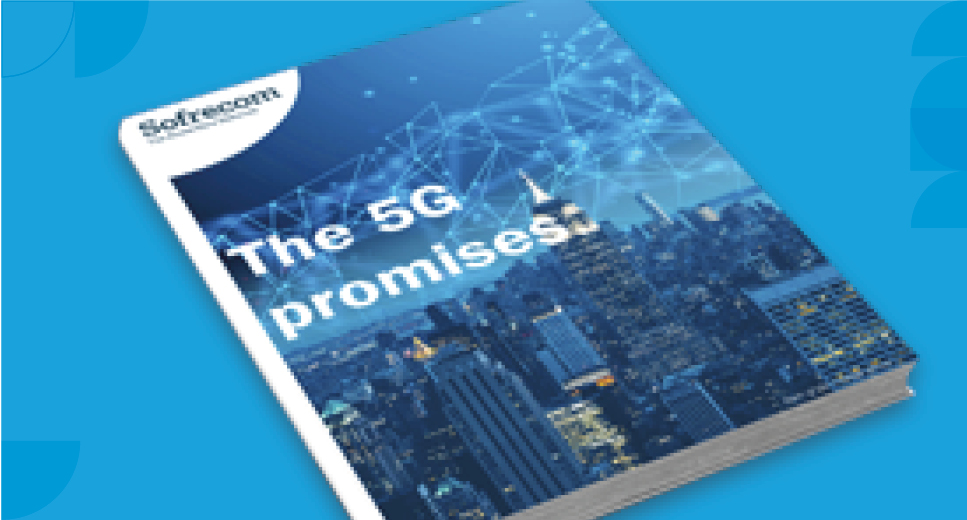
At the beginning of 2019, France's ARCEP opened a "5G pilot" program, allowing future next-generation mobile operators to set up 5G experimental radio sites broadcasting on 3.5 GHz and 26 GHz frequencies. Although the technology had not yet been fully standardized, Orange and its competitors launched large-scale tests in around thirty pilot cities. This pre-commercial network rollout was unprecedented in scale. But what benefits does this bring for both operators and states?
A promising yet complex technology
5G ultra-high-speed mobile networks aim to meet a broad and diverse range of needs through a unified technology—despite potentially conflicting performance requirements in terms of speed, latency, coverage, and energy efficiency. Use cases include connected vehicles, industrial automation, IoT, and remote surgery.
The network relies on new technological components (radio interface, network architecture) still under development or optimization. Final specifications from 3GPP’s Releases 16 and 17 were expected in June 2020 and September 2021.
5G will also leverage new frequency bands (3.5 GHz, 1.5 GHz, and 26 GHz).
Its rollout will be gradual, as the technology is not fully mature and the 26 GHz spectrum will not be allocated before 2022.
5G testing and deployment worldwide – bands above 6 GHz
348 operators are testing or deploying 5G
61 operators in 34 countries have launched commercial 5G services, including AT&T and Verizon in the US, LG Uplus, KT, and SK Telecom in South Korea, Elisa in Finland and Estonia, Orange in Romania, and Vodacom in Lesotho(Source: GSA)
Pilot projects: anticipating the shift toward revolutionary use cases
Pilot cities, with 50 to 80 5G radio sites (mostly using 3.5 GHz), allow operators to anticipate large-scale deployment. These cities also serve to gradually prepare for disruptive services aimed at both consumers and vertical markets. The ITU identifies three main 5G usage categories: eMBB, mMTC, and URLLC.
Three Phases of 5G Rollout
Phase 1: enhanced Mobile Broadband (eMBB)
Since 2019, initial 5G NR (New Radio) deployments have followed 3GPP Release 15, in its NSA (non-standalone) version. 5G radio equipment is connected to the 4G LTE core network. eMBB delivers faster, more reliable connectivity for video streaming, online gaming, and VR/AR applications—nothing more. Operators benefit from better capacity management in congested areas, improving service quality and customer retention.
Phase 2: massive Machine Type Communications (mMTC)
Following the 26 GHz spectrum allocation, massive IoT will support the connection of huge volumes of connected devices in small areas, each with different QoS requirements. The standard requires up to 1 million connections per km2, compared to 60,680 per km2 with 4G LPWA. This phase will boost emerging technologies: big data, AI, blockchain.
Phase 3: Ultra-Reliable Low Latency Communications (URLLC)
Thanks to the 5G core network, URLLC enables network slicing, letting operators create virtual network segments with customized services tailored to clients' specific needs in capacity, latency, and reliability.
To support these advanced use cases, 3GPP released the SA (standalone) version of 3GPP Release 15 in June 2018, based on a fully 5G-native architecture.
Key benefits before nationwide rollout
The innovative model of 5G pilot cities and experimental platforms acts as a strategic lever for commercial and economic success. One year of experimentation has allowed operators to make progress on multiple fronts:
1. Validating equipment and suppliers
Real-life testing evaluates 5G equipment performance—speed, energy consumption, security—from major vendors (Ericsson, Nokia, Samsung, Huawei), helping operators prepare tender offers. To reduce CAPEX during progressive NSA to SA transitions, 5G NR’s lower layers must be compatible with both 4G and 5G cores.
2. Upskilling deployment teams
In France, 5G engineering requires new skills across operational, configuration, and installation areas. Uplink/downlink spectrum management will be more complex, demanding tighter coordination among operators to avoid interference and synchronization of all devices using GPS clocks—posing additional site costs and technical constraints.
3. Building a 5G ecosystem
Pilot cities let operators forge partnerships with startups, enterprises, research centers, and professional organizations. Together, they co-develop use cases and new business models around vertical markets: smart mobility, IoT, smart cities, VR, telemedicine, Industry 4.0, UHD video, and gaming. Operators take on a new hybrid role: part Telco, part IT integrator.
4. Showcasing innovation to future clients
Pilot cities act as innovation showcases for operators to build credibility with consumers and businesses in the emerging ultra-broadband market.
5. Supporting national digital inclusion goals
By facilitating the transition to 5G and identifying promising use cases, the French government furthers its goals of digital inclusion and economic competitiveness. 5G will democratize digital services, accelerate public sector digital transformation, and spark innovation across industries. Large-scale 5G testing is therefore in the state’s interest.




